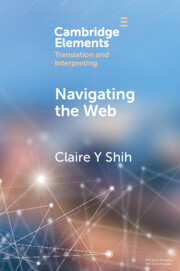Element contents
Navigating the Web
Published online by Cambridge University Press: 03 April 2023
Summary
Keywords
Information
- Type
- Element
- Information
- Online ISBN: 9781009122924Publisher: Cambridge University PressPrint publication: 13 April 2023
